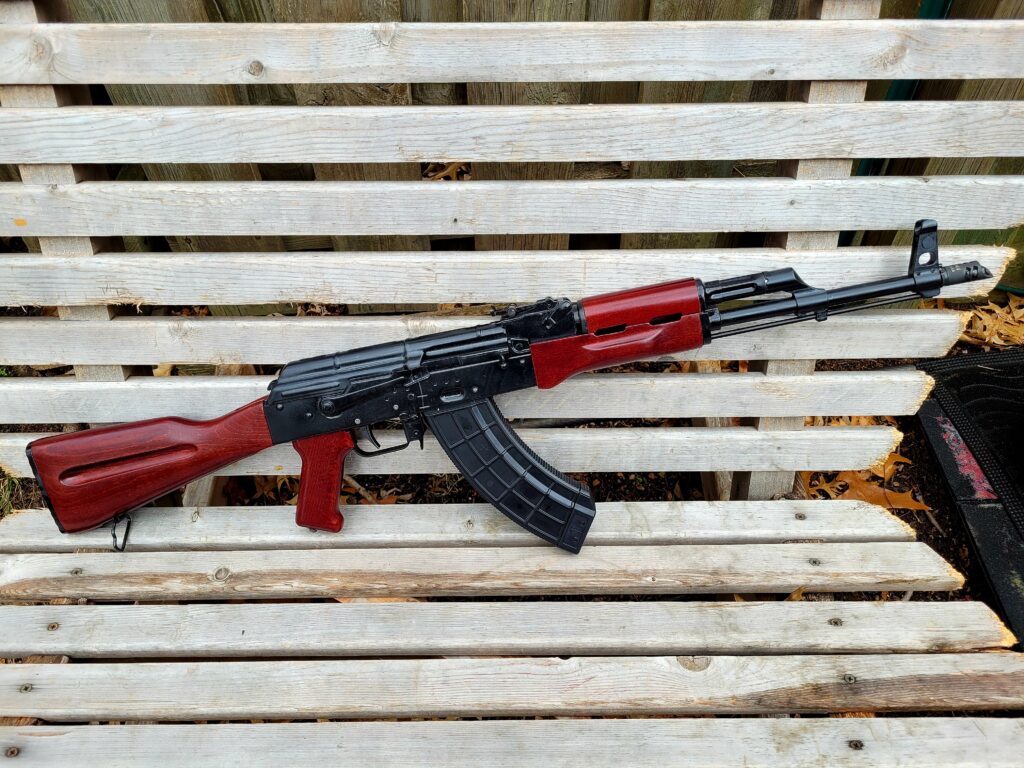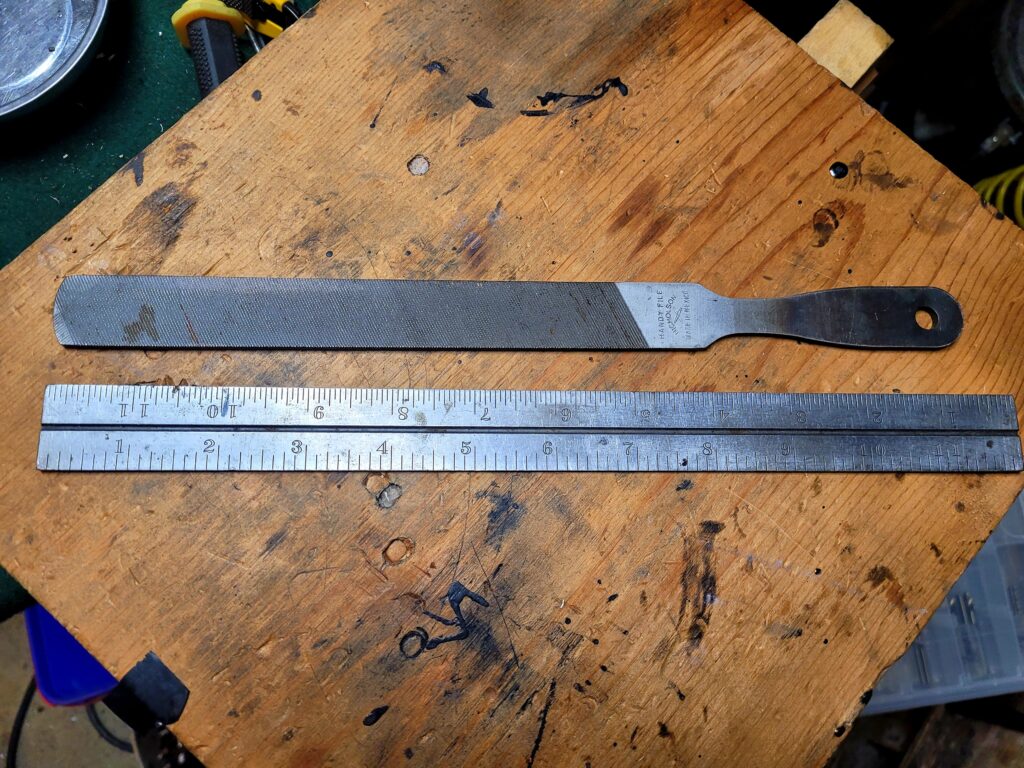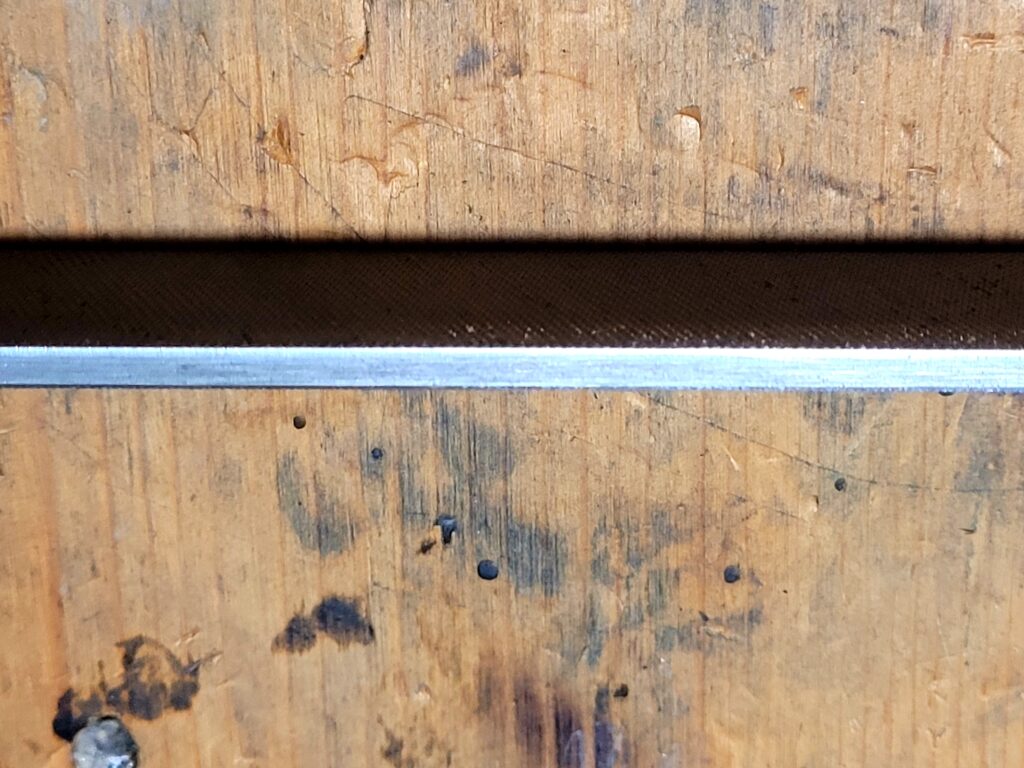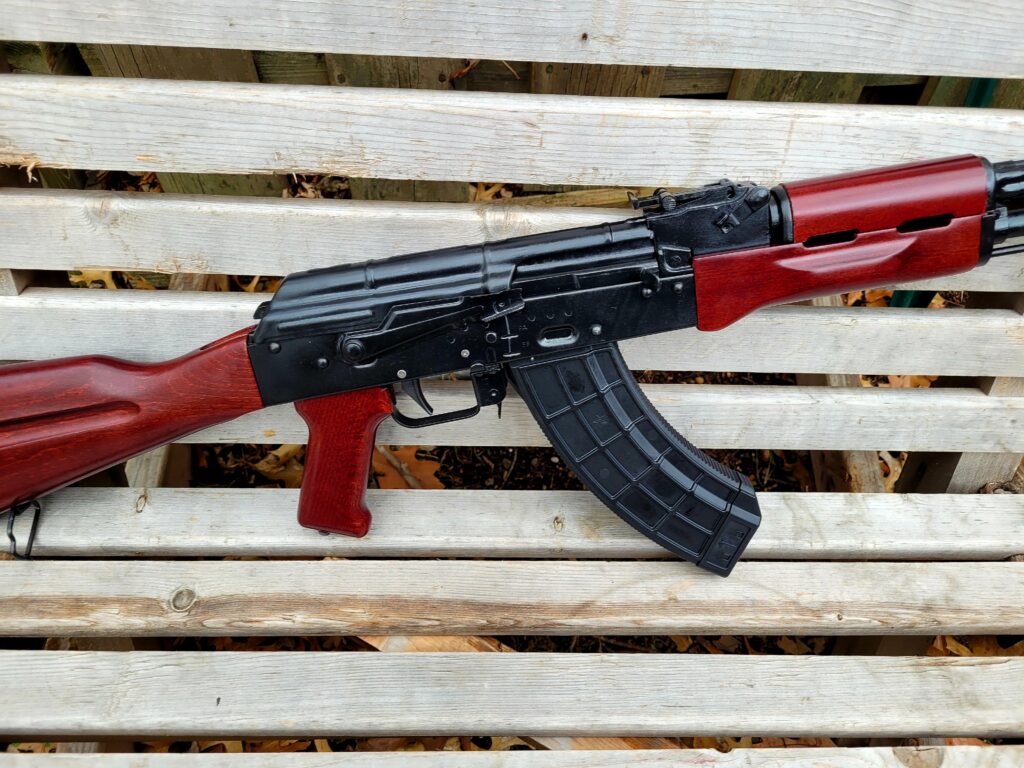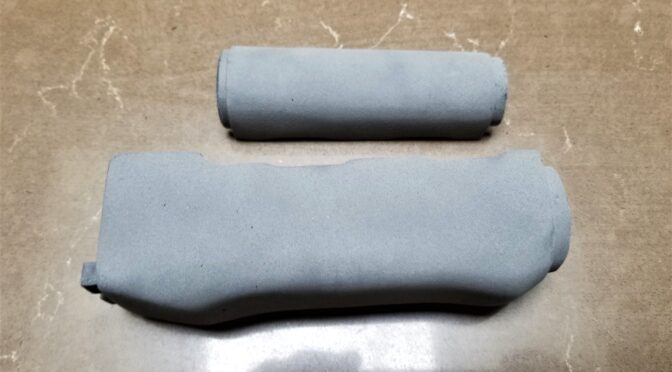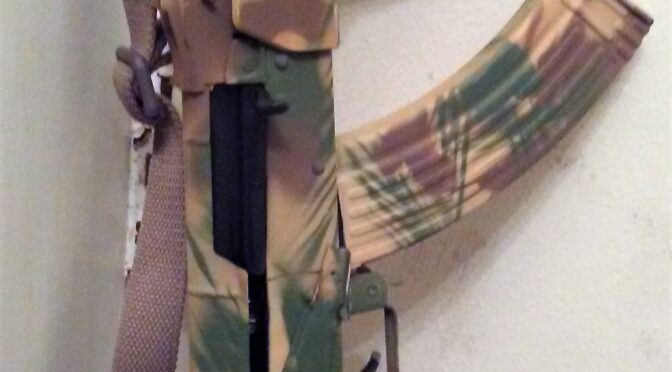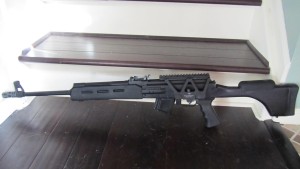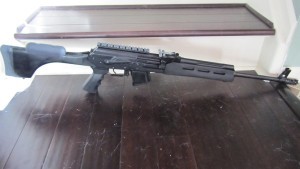Ronin’s Grips Vepr Furniture Installation Notes
Version 1.7 1/27/2014
First and foremost, please ensure your rifle is unloaded and a round is not in the chamber. Please be safe!
In general, the urethane plastic we use for the buttstock and handguard will behave like hardwood when it is being cut. Thus, if you choose to install something, follow the guidance for a wood stock in terms of hole sizes to drill, tools to use, etc. Note, the plastic has very little give and forcing parts together will risk stress fractures. Make sure they seat/fit in a square even manner.
The following are installation notes for each component of our Vepr rifle furniture system. What you need to install will depend on what you purchased.
Buttstock
The buttstock is attached to the rifle’s rear trunnion via two #10×7/8” screws. The urethane plastic we use is very hard and ideally the hole for the screw should be drilled with a #21 (0.1590”) drill. Take care to ensure the stock is centered before locating and drilling each hole.
Tip: If for some reason you need to drill a new hole, the old hole can be filled with quality epoxy cement and allowed to cure per the instructions of the glue. To fill a deep hole, either run the epoxy down the side or use something long and thin, such as a toothpick, to get the epoxy to the bottom.
For durability, use a longer setting high-strength epoxy as the quick 90-second, 5-minute and 10-minute epoxies are prone to “sugaring” or breaking down with constant jarring. JB Quickweld, Brownell’s Acraglas (our recommendation) and DevCon industrial epoxies (such as “Plastic Steel”) are all good choices. If you want to color the epoxy black, add a bit of black powdered tempera paint to the mix while stirring thoroughly.
Please note that if you buy the buttstock without a recoil pad, you must add one to protect the end of the stock from abrasion.
Optional Recoil Pad
The recoil pad is secured to the rear of the buttstock via two #10×3/4” screws. Again, be sure to drill a hole first with the recoil pad centered on the stock.
If you want to blend the pad to the stock, put a thin film of black RTV silicone on the buttstock and use your finger to smooth the edge between the stock and the pad. This is for looks only – the screws must still be used to secure the pad in place. If you decide to do this, fit the pad first and have everything ready. Then remove the pad, add the thin amount of RTV, put the pad back on, tighten the screws and then blend the silicone with your finger.
Handguard
There are two key things you need to know about the handguard:
First off, there is a special 13mm wide x 5mm thick spacer in the bag with the screws. It must be used between the handguard and the barrel lug to get the angle correct. The original Vepr screw is used and the special spacer is mandatory. If you lose the spacer at some point down the road, stack 6mm washers from the hardware store to get the necessary space between the barrel and the handguard.
Second, with the spacer on the screw, swing the handguard into place but do not tighten the screw. The Vepr handguard sometimes fits tightly and you don’t want to adjust the screw hole if the unit isn’t fully seated at the rear in the receiver. Carefully remove the screw, leaving the spacer properly positioned and look down in the hole and check the alignment between with the screw hole in the forearm and the hole in the barrel lug. You may need to use a circular file to carefully “slot” the handguard hole just a bit to get proper alignment. It is very important that you make sure the handguard is fully seated to the rear before you make any changes. Take a little off and test over and over– go slow and don’t rush. Use the oblong washer that came with the stock to reinforce the hole. If the handguard does not rest squarely against the receiver you will risk the handguard cracking by the barrel lug as it will be placed under undue stress during firing. So, take your time slot the hole as needed.
Care of the Handguard and Buttstock
The handguard and buttstock are made from our proprietary urethane plastic that is machinable. This means you can drill, cut, sand, abrasive blast and so forth. When we build the furniture, we sand to 180 grit and then use 80 grit AlOx blast media at 90 PSI to frost the plastic.
If something chips or gets scratched at some point in the future, sand with 80 grit, then 100-150, then 220, then 320 then 400. Another option is to repair the scratched area and then abrasive blast after 150-180 grit sand paper is used. When making the furniture, we use an abrasive blaster with 80 grit aluminum oxide media at 90-100PSI to create a non-slip surface. After either sanding or blasting, you can apply a wax based finish as a “top coat”. The recommended sealer is actually a beeswax blend developed for boots called “Sno-Seal” by ATSKO. In general, you could use any wax based finish such as clear or black shoe polish, that is then buffed with a cloth.
Thank you for purchasing our furniture. We truly hope you enjoy it.
Like this:
Like Loading...
